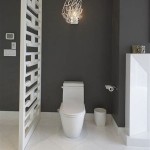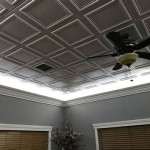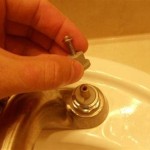Is It Illegal to Have a Bathroom in the Basement?
The legality of installing a bathroom in a basement is a complex issue heavily dependent on local building codes, zoning regulations, and specific property conditions. While there is no universal law prohibiting basement bathrooms, numerous factors can render such installations illegal if not properly addressed. Failure to comply with these regulations can lead to costly fines, mandatory removal of the bathroom, and even impact the resale value of the property.
The presence of plumbing in a basement requires careful consideration due to the potential for flooding, sewage backups, and structural damage. Municipal authorities are typically concerned with ensuring the health and safety of residents, and their regulations reflect this concern. Understanding these regulations and adhering to them throughout the planning and construction process is crucial for a legal and functioning basement bathroom.
This article will delve into the key factors determining the legality of basement bathrooms, focusing on common requirements and potential pitfalls. It will explore aspects such as egress windows, proper plumbing installation, ventilation, and adherence to local codes, providing a comprehensive overview for homeowners considering this type of renovation.
Egress Requirements and Safety Concerns
One of the most significant factors determining the legality of a basement bathroom, particularly if the basement is considered a habitable space, is the presence of proper egress. Egress is defined as a safe and unobstructed path of escape in the event of an emergency, such as a fire. Building codes generally require basements used as living areas to have at least one egress window or an exterior door that allows occupants to escape directly to the outside. The size and functionality of these egress points are strictly regulated.
Egress windows must meet specific minimum size requirements for both the window opening and the sill height above the floor. The intent is to ensure that occupants can easily and quickly exit the basement in an emergency, even if they are impaired or have limited mobility. The exact dimensions vary depending on the local building code, but generally, the window opening must be large enough to allow a firefighter in full gear to enter the basement for rescue purposes. Sill height restrictions prevent the window from being too high to easily climb out of. Regular maintenance of the egress window is also necessary to ensure it continues to function properly.
If a basement lacks a suitable egress window or exterior door, the installation of a bathroom, which increases the likelihood of occupancy and therefore risk, may be deemed illegal. In such cases, homeowners may need to consider adding or modifying an existing window to meet the egress requirements before proceeding with the bathroom installation. This can involve significant construction work, including cutting into the foundation and installing a window well.
Beyond egress windows, smoke detectors and carbon monoxide detectors are frequently mandatory in basements, especially when a bathroom and other living spaces are present. These devices provide early warning of potential hazards, allowing occupants to escape safely. Local building codes often specify the placement and type of detectors required, ensuring that they are strategically located to provide maximum protection.
Additionally, ensuring adequate lighting within the bathroom and throughout the basement is crucial for safety. Proper lighting can help prevent accidents and facilitate easy navigation in emergency situations. Building codes typically specify minimum lighting levels for habitable spaces, and these requirements must be met to ensure compliance. The type of lighting used should also be considered, with energy-efficient options being preferred in many jurisdictions.
Plumbing Considerations and Code Compliance
The plumbing system for a basement bathroom presents unique challenges due to its below-grade location. Gravity typically assists with draining wastewater from fixtures on higher floors, but in a basement, wastewater needs to be pumped upwards to connect to the main sewer line. This requires the installation of a sewage ejector pump, which is a mechanical device designed to lift wastewater against gravity.
Building codes often have stringent requirements for the installation and maintenance of sewage ejector pumps. These regulations typically address aspects such as the pump's capacity, the type of piping used, and the need for a backflow prevention device. The purpose of these requirements is to prevent sewage backups, which can cause unsanitary conditions and property damage. A properly sized and installed ejector pump is essential for ensuring the reliable and efficient removal of wastewater from the basement bathroom.
Backflow prevention devices are critical components in basement plumbing systems. These devices prevent wastewater from flowing backward into the water supply, which can contaminate drinking water. Building codes often require specific types of backflow preventers to be installed on fixtures in basements, particularly those connected to the potable water supply. Regular inspection and maintenance of these devices are essential to ensure they are functioning properly and providing adequate protection.
Furthermore, proper venting of the plumbing system is crucial for preventing sewer gases from entering the bathroom and other living spaces. Vent pipes allow air to circulate within the plumbing system, preventing pressure imbalances that can lead to unpleasant odors and potential health hazards. Building codes specify the size and placement of vent pipes, ensuring that they effectively remove sewer gases from the building.
The type of piping used in the basement bathroom is also subject to building code regulations. Approved materials, such as PVC or PEX, are typically required for water supply and drainage lines. These materials are durable, resistant to corrosion, and meet specific standards for water quality and safety. The use of unapproved or substandard piping can lead to leaks, contamination, and code violations.
Ventilation and Moisture Control Requirements
Basements are naturally prone to moisture problems due to their below-grade location and proximity to the soil. Moisture can lead to mold growth, which can cause health problems and damage building materials. Therefore, proper ventilation and moisture control are essential considerations when installing a bathroom in a basement. Building codes often have specific requirements for ventilation and moisture control in basements to address these concerns.
Adequate ventilation is crucial for removing moisture and odors from the bathroom. Building codes typically require bathrooms to have either a window that can be opened or a mechanical ventilation system, such as an exhaust fan. The exhaust fan must be sized appropriately for the size of the bathroom and must be vented to the exterior of the building. This ensures that moist air is effectively removed from the bathroom and does not contribute to mold growth in the basement.
In addition to ventilation, moisture barriers can help prevent water from entering the basement through the walls and floor. These barriers, such as waterproof membranes or sealants, create a protective layer that reduces the risk of water penetration. Building codes may specify the type and extent of moisture barriers required in basements, depending on the local climate and soil conditions.
Proper drainage around the foundation of the building is also essential for preventing moisture problems in the basement. This includes ensuring that the ground slopes away from the foundation and that gutters and downspouts effectively channel rainwater away from the building. Poor drainage can lead to water pooling around the foundation, which can eventually seep into the basement.
Furthermore, controlling humidity levels in the basement can help prevent mold growth. Dehumidifiers can be used to remove excess moisture from the air, maintaining a humidity level below 60 percent, which is generally considered to be the threshold for mold growth. Regular use of a dehumidifier, especially during humid seasons, can significantly reduce the risk of mold problems in the basement.
In conclusion, the legality of a basement bathroom hinges on strict adherence to local building codes, zoning regulations, and specific property conditions. Addressing crucial factors such as egress, proper plumbing with sewage ejector pumps, backflow prevention, ventilation, and moisture control is paramount. Homeowners must thoroughly research and comply with all applicable requirements to ensure a safe, legal, and functional basement bathroom, avoiding potential fines, removal orders, and impact on property value.

Is It Illegal To Have A Bathroom In Basement Nyc

Is It Illegal To Have A Bathroom In Basement Nyc
Is It Possible To Install A Toilet In Basement That Not Plumbed For Bathroom Quora

Adding A Basement Bathroom What You Need To Know Make It Right

What The Heck Is A Pittsburgh Potty And Why It In Basement

Adding A Basement Bathroom What You Need To Know Make It Right

Adding A Basement Bathroom What You Need To Know Make It Right

Compliance Essentials For Legal Basement Apartments Comprehensive Requirement Guide Csg Renovation

All About Basement Bathroom Systems Riverbend Home
Is It Possible To Install A Toilet In Basement That Not Plumbed For Bathroom Quora
Related Posts







